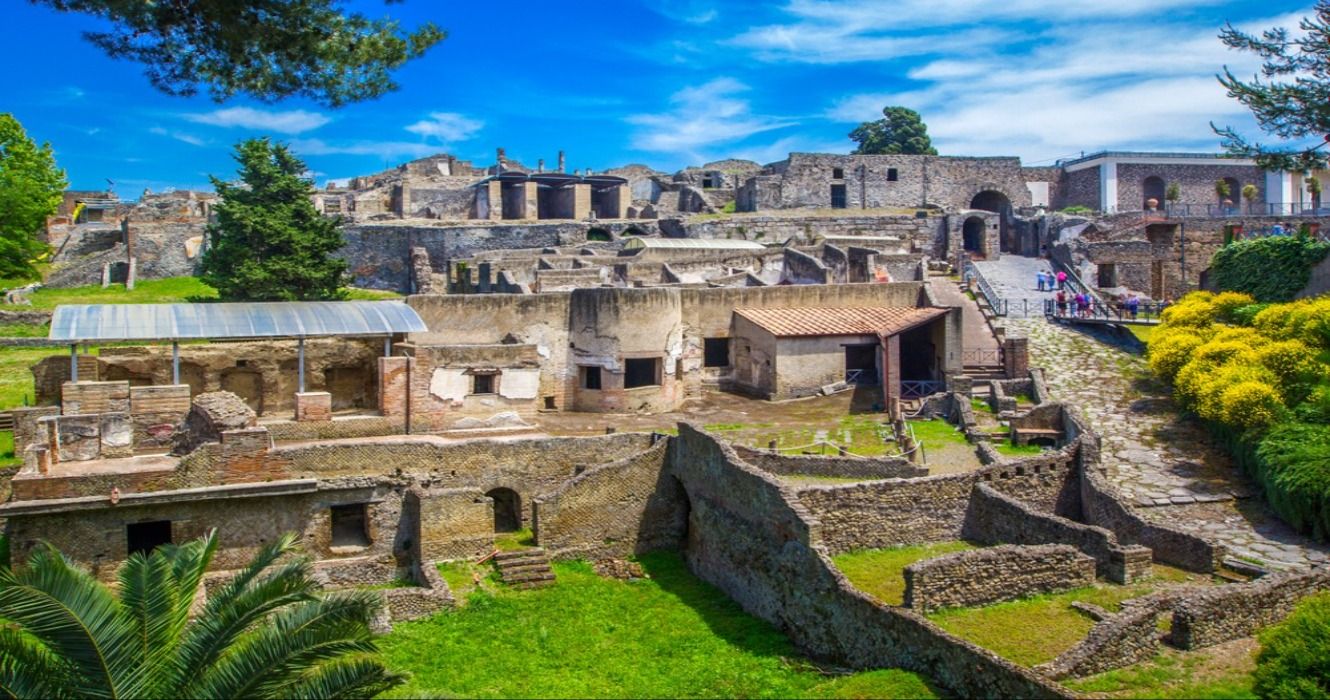Summary
- The National Archaeological Museum of Naples houses a remarkable collection of Roman artifacts, including well-preserved frescoes from Pompeii, providing a glimpse into daily life and evolving perspectives of the ancient city.
- The frescoes were crafted using watercolor pigments on wet plaster, creating vivid depictions of myths and intimate scenes that were preserved through Pompeii's tragic encounter with Mount Vesuvius.
- Visiting the museum and viewing these vibrant frescoes offers a once-in-a-lifetime experience to connect with the artistry and narratives of an ancient civilization, as only a third of Pompeii has been excavated and preserved.
The National Archaeological Museum of Naples is a repository of Italy's cultural heritage, showcasing a remarkable collection that illuminates ancient civilizations. With a focus on Roman artifacts, the museum unveils treasures from Pompeii, Stabiae, and Herculaneum, notably displaying frescoes that provide captivating glimpses into the past.
Crafted using watercolor pigments on wet plaster, these frescoes offer vivid depictions of daily life, from myths to intimate scenes, preserved through Pompeii's tragic encounter with Mount Vesuvius. The city's engulfment in ash created a time capsule that safeguarded these artworks for centuries.
The frescoes, spanning different styles from 150 BC to 79 AD, disclose Pompeii's evolution and inhabitants' perspectives. Rediscovered in 1599 and later in the 18th century, they now find their home in the museum, connecting visitors to the city's intimate stories. The museum's custodianship ensures Pompeii's frescoes remain vibrant testaments to a bygone era, celebrating the artistry and narratives of an ancient civilization. Considering a third of Pompeii has yet to be excavated, standing and marveling at preserved art from that era is a once-in-a-lifetime experience.
What Are The Frescoes Of Pompeii?
- Frescoes from Pompeii symbolize the art and culture of that time period.
- Many were destroyed during the volcanic eruption, so seeing well-preserved ones is rare.
For those wondering about the meaning behind frescoes, these work as wall art created back in the time when Pompeii was a thriving city filled with life, creativity, and community. These works give historians and onlookers a view of what life back then may have been like for the Roman people before Mount Vesuvius erupted and killed off much of the population.
After all, there aren't many intact remnants from back then, especially in the city of Pompeii. Typically, frescoes were canvas/oil paintings that stood no chance against lava pouring in around them. The National Archaeological Museum of Naples hosting a collection of them is a rare, significant exhibit. People come from all corners of the world to see these frescoes, so that's certainly an incentive to book a flight to Naples, Italy.
From an artist's standpoint, viewing frescoes in Italy in modern times is also a fantastic way to see how they were created and what materials could have been used, given the relative lack of resources back then.
Visiting the oldest stone amphitheater in Pompeii may be another way to indulge in the culture of ancient Rome while in the area.
What Can You See At The National Archaeological Museum In Naples?
- Address: Piazza Museo, 19, 80135 Napoli NA, Italy
- Hours: Wednesday - Monday from 9 AM to 7:30 PM
- Tickets: $24.83 per person
For those wanting to check out the National Archaeological Museum of Naples, this is a history-filled location that beckons visitors from around the globe. Notably, the museum boasts Greek, Roman, and Renaissance works, especially Roman artifacts from the nearby Pompeii, Stabiae, and Herculaneum sites.
On top of these, the frescoes give tourists insight into the culture of Pompeii before a volcano destroyed large portions of it.
Pompeii was known as a flourishing resort city south of ancient Rome and was nestled along the coast of Italy in the shadow of Mount Vesuvius, an active volcano. Although stunning to look at from a villa, this became why many of the city's people died in the year 79 AD, when it buried the town of Pompeii under a thick carpet of volcanic ash.
The story of Pompeii has tugged on the heartstrings of cultures and people for centuries, as it's one of the most disturbing in history. Nearly 2,000 Pompeiians died in the city, but the eruption killed up to 16,000 people in Pompeii, Herculaneum, and other towns and villages.
Having this museum holding some of the final pieces left from the city is incredible.
Can People Tour Pompeii Today?
- Guided tours of what is currently Pompeii are available to Italian visitors.
Yes, there are tours of Pompeii available to those in the area. Typically, these tours will consist of a guided tour of its grand ruins, but they can also take people up the culprit of the day itself – the formidable Mount Vesuvius!
This is a cool way to explore the city's history, usually with a local tour expert or historian. Besides some structures still standing from the natural disaster, this also stands as a test of time for the Italian people who would have been walking the streets of ancient Rome a few thousand years ago.
It might also be worth it to see Stabiae, the other Roman town buried like Pompeii by Vesuvius.
Pompeii, although a heart-wrenching story, is still a beautiful lesson in history and will forever hold a place in our hearts.




